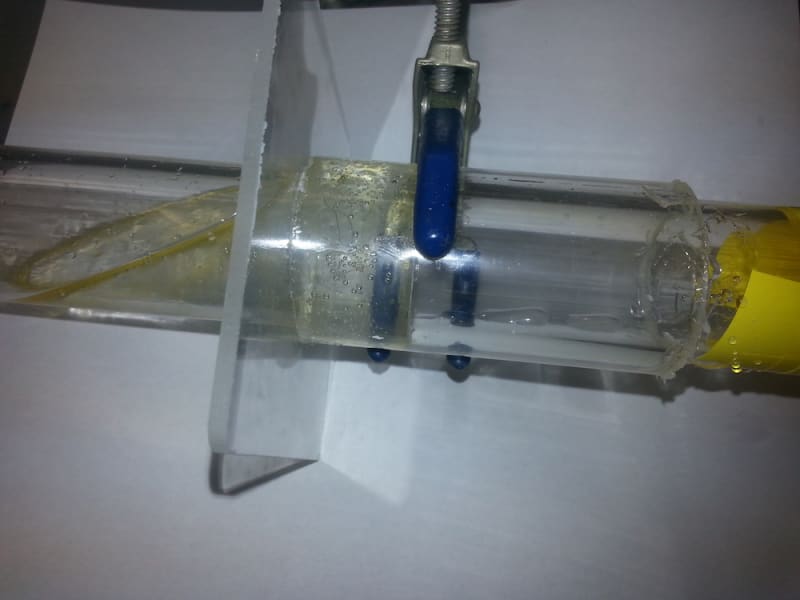Currently, it is very near impossible to remove oil sheen from water. Typically, a sheen of oil remains after the majority of spilled oil is recovered and removed from a body of water. The current methods consist of using materials made from polypropylene such as oil absorbent pads to remove as much oil as possible or to vacuum the water and oil mixture into a vessel for proper disposal. Typical methods will leave a small amount of oil that is commonly visible as a sheen.
The combination of a lightweight nylon spunbond fabric to polypropylene melt blown pads or polypropylene spunbond will allow the removal of oil sheen from water. Nylon is both hydrophilic and oleophilic. Nylon fabrics currently are not used in the oil spill remediation methods. Nylon 6,6 is a crystalline polymer containing oleophilic hydrocarbon chains connected by hydrophilic functional amide groups. Nylon 6,6 is known to rapidly wet in a wide range of liquids, as evidenced by a large drop in glass transition temperature when nylon 6,6 is exposed to both polar and nonpolar solvent systems.. Hydrogen bonding between the polyamide chains results in high tensile strength and strong filament-to-filament bonding without the use of low melting copolymers or adhesives in nylon spunbond fabrics. Spunbond nylon fabric made on an industrial scale in basis weights ranging from 0.3 to 4.0 ounces per square yard (osy) comprises continuous fibers, which is preferred in filtration applications that require no fiber migration into the filtered medium. The fabric’s basis weight (area mass density) can be finely controlled by controlling the linear mass density and the thickness. These characteristics make spunbond nylon an ideal material for removal of oil sheen from water.
The first illustration shows the ability of the fabric to absorb small amounts of spilled oil. An apparatus was rigged that placed nylon spunbond between two "O" rings. An oil and water mixture was introduced on the inlet side. Water with no oil was on the exit side after the fabric. The second illustration shows a fence made from a heavier, thicker nylon spunbond fabric deployed at a spill site. Water with no oil is on the downstream side of the fabric. The video shows how the nylon spunbond fabric removes 5W 30 oil and oil sheen from water.
This can be accomplished several ways. Nylon spunbond fabric and polypropylene spunbond or polypropylene melt blown fabrics can be combined through a variety of methods. One technique is the use of ultrasonic welding technology. This technology is currently available and there are toll converters that can accomplish this. All three fabrics, nylon spunbond, polypropylene spunbond and polypropylene melt blown, are commercially available.
Exiting pad manufacturing equipment is readily available since there are many oil spill remediation pads supplier both in the US and abroad. The innovation merely requires a way to incorporate a lightweight nylon spunbond fabric into their process.
Video
Like this entry?
-
About the Entrant
- Name:Albert Ortega
- Type of entry:teamTeam members:Albert E. Ortega Daniel Baillie
- Software used for this entry:None
- Patent status:pending





